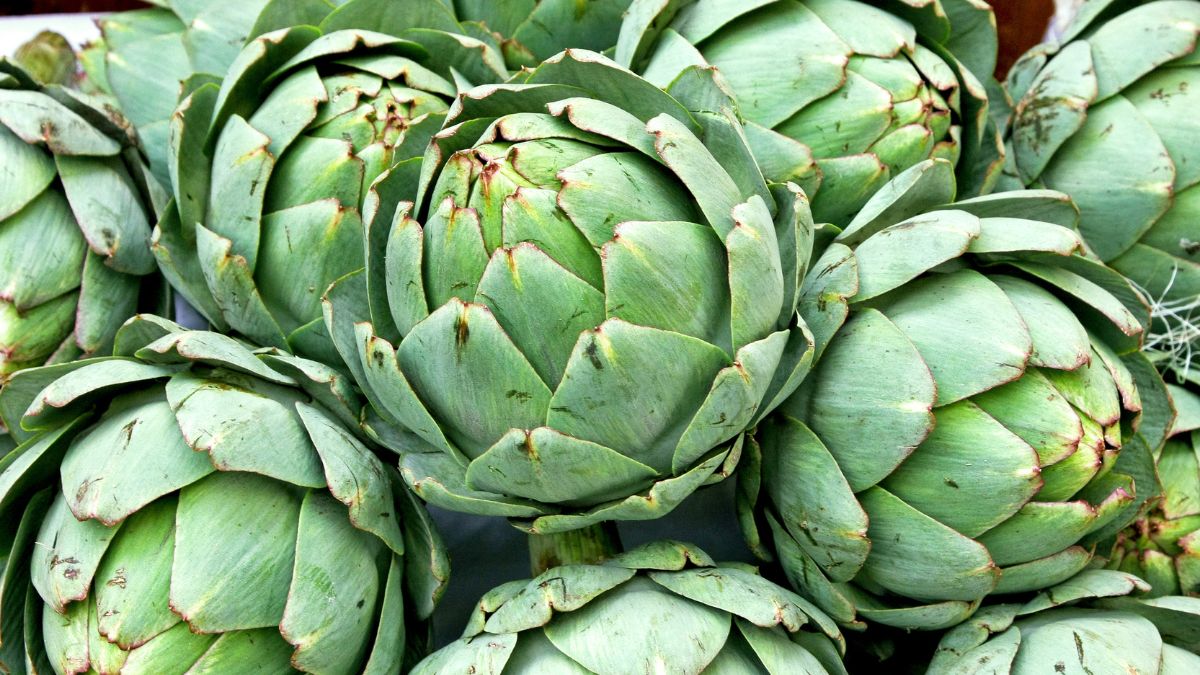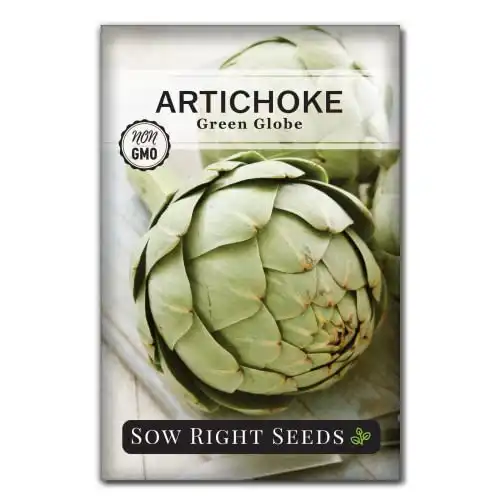Knowing how to grow artichokes from crowns is quite simply a rewarding experience. Although a lot of people are not fans of this amazing thistle. It can be fun to grow for those who are fans of it. Here we will talk about how to grow artichokes from crowns
The Artichoke
Cynara cardunculus, commonly known as the artichoke is a perennial plant. It is endemic to parts of Africa, and Italy.
This plant grows best in soils that are loamy, clay, sandy and well-draining, meaning it is highly adaptable to a wide range of
Like most plants, it blooms in the spring and summer months.
Artichoke plants can get up to 5 feet in being, and have a maximum width of between 6 and 8 feet.
In the first year of growth, artichokes require regular watering to establish well. After the plant has been established, the watering frequency should be reduced because its water requirements reduce.
Artichokes require a high amount of a balanced fertilizer of 5-5-5 NPK, such as this one.
Non-GMO Heirloom Packet with Instructions to Plant and Grow an Outdoor Home Vegetable Garden...
Artichoke Crown
The crown of the artichoke is the part that looks like a tuft of the leaves at the base of the stem, a bit above where it attaches to the ground. It is where the offshoots or the buds will stem out of.
The crown is usually at the same level as the
The artichoke crown is the easiest part of the plant to use to propagate it. That is why most people start with the crowns. The roots sprout easily out of it, and the lovers of this thistle know they are well on their way to enjoying its juicy, bitter fruit.
Step By Step On How To Grow Artichokes From Crowns
Step 1: Find artichoke root crowns
Artichoke crowns can be found on the plant if you already have it. If you do not, you can easily purchase them as they are available at many garden stores and nurseries.
Non-GMO Heirloom Packet with Instructions to Plant and Grow an Outdoor Home Vegetable Garden...
Step 2: Prepare the soil in the garden spot to plant
You will need to add potassium-rich fertilizer to the
Pot your root crowns in moist potting
Step 3. Plant the artichoke root crowns
Knowing how to plant an artichoke is important. You can either plant the crown in the garden
Step 4: Water well after planting
Water the garden well after planting. This will help to dissolve the nutrients and make the nutrients quickly available to the roots.

Step 5: Mulch the bed
Mulch the bed or area where your artichokes are planted. This will help provide additional nutrients to the plant and prevent the growth of weeds. It will also help retain
Keep watering well until the plant is established which may take up to a few weeks. If your artichokes are grown in pots, you can repot them at least once every three years, but if they are in the
The Best Artichoke Growing Conditions
Grow your artichokes in full sun to get the best growth out of them. They grow best in the USDA plant hardiness zones of Zone eight and higher.
Important Considerations For Growing Artichokes From
If you harvest large amounts of foliage from your artichokes, you can expect to harvest smaller artichokes, so keep in in mind when harvesting. Do not over harvest, give your plants room to grow

Never let the
After harvesting your artichokes, cut down the leaves and pull down any remaining flower buds to keep the plant producing new leaves throughout the winter months.
Beware of the common pest that affects artichokes, such as aphids, thrips, leafminers, gastropods, plume moths, caterpillars, beetles, and weevils. As well as diseases such as root rot, powdery mildew, drawf virus, damping off, and Botrytis. Do your research on these so you know how to notice them or recognize their symptoms before they do too much damage to your plants
Where Can You Grow Artichokes?
You can grow artichokes in any area that has full sun in moderately warm climates and partial sun in hot climates are best for this plant’s growth. They grow best in temperatures of 60-70 degrees F. They can be grown directly in the ground or in pots.
Can You Grow An Artichoke Plant From An Artichoke?
You can plant a Jerusalem artichoke from an artichoke. You cannot do it with traditional artichokes.

Conclusion – How To Grow Artichokes From Crowns
Here you have the best step-by-step method on how to grow artichokes from crowns. We hope you will be able to use it to grow the best artichokes to use for culinary purposes, decor and any other reasons.
Even though artichokes require a bit more care than other plants, do not despair because they are self-sustainable once they get going. And once your start enjoying the fruits of your labor, it will be the most rewarding experience.
We hope you found this article interesting and useful, please share it with your family and friends.

An aquaculture specialist and freelance writer. Passionate about anything sustainable living, such as growing your own food, and if you can do it in conjunction with fish farming, even better! I currently work as an aquaculture researcher where I can expand and share my knowledge and skills on aquaculture, crop farming and adding value to wastewater by using it to grow food products. I enjoy reading and learning as much as possible, and writing is another avenue for me to share the knowledge I gain with others. I want my writing to inspire people to try their hand at gardening, whether indoors or outdoors. You can even start by keeping a few houseplants indoors to help you gain a bit of confidence if you need to.





